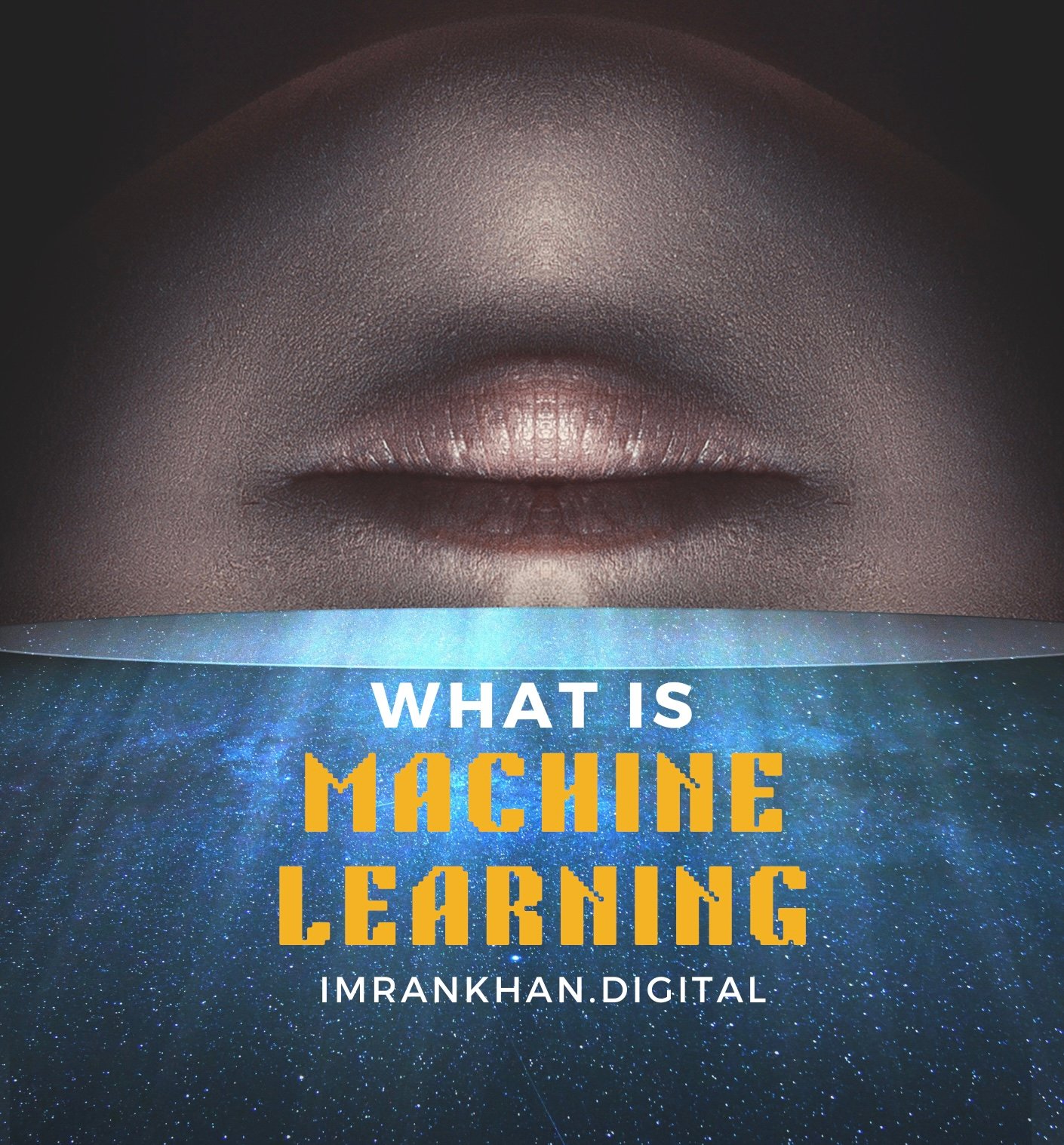
Machine Learning (ML) is a field of study that gives computer systems the ability to learn from past experiences and act on the information provided, without being specifically programmed. ML allows for machines to find hidden insights in large sets of data, such as trends or correlations, and adaptively change their behavior in response.
This field has been rapidly advancing over the last few years and has become a popular tool in the industry. It is increasingly used for complex decision-making tasks, such as automatic steering in cars or targeted online ads.
Mastering Machine Learning: A Comprehensive Guide to the What, Why, and How of ML
What is Machine Learning in simple words and why is it used?
Machine Learning is a subset of artificial intelligence that enables systems to use algorithms and statistical models to autonomously identify and act on patterns in data. It is used because it can identify and process complex data in a way that allows businesses and organizations to use the data for predictions and decision-making, increasing efficiency and improving accuracy. In simple terms, it is used to take huge amounts of data, analyze it and extract useful patterns to make better decisions and predict outcomes.
What are the basics of Machine Learning?
Machine learning is a subset of artificial intelligence that involves the creation of algorithms and models that can learn from and make predictions or decisions based on data. The basics of machine learning are:
- Data: A set of observations or examples that is used to train the algorithm.
- Model: A mathematical representation of a relationship between inputs and outputs.
- Algorithm: A set of instructions that is used to train the model on the data.
- Training: The process of using the data and algorithm to fit the model to the data and make it better at making predictions.
- Evaluation: The process of measuring the performance of the model and making any necessary improvements.
- Prediction: The process of using the trained model to make predictions on new data.
- Overfitting: A common problem in machine learning where a model becomes too complex and fits the training data too closely, resulting in poor performance on new data.
What are the objectives of Machine Learning (ML)?
The objectives of Machine Learning are to create programs and algorithms that are able to process data and make decisions with minimal human intervention.
Some of the main objectives of Machine Learning are:
1. Prediction: making predictions about future events based on past data.
2. Classification: categorizing data into discrete classes based on patterns and relationships in the data.
3. Clustering: grouping similar data points together into clusters, without prior knowledge of the groups.
4. Anomaly detection: identifying data points that are significantly different from the rest of the data.
5. Recommender systems: making personalized recommendations to users based on their past behavior.
6. Association rule learning: discovering relationships between variables in large data sets.
7. Dimensionality reduction: reducing the number of variables in a data set while retaining its essential information.
8. Generative models: generating new data that is similar to existing data.
What is the theory of Machine Learning?
Let’s understand in detail about The theory of Machine Learning. It is a field of Artificial Intelligence (AI) which involves creating various algorithms and models that are capable of making predictions, decision-making and improving their performance as they acquire new data.
The process involves analysing patterns in large datasets and creating automated systems that are capable of learning from these datasets and providing useful predictions and insights. By creating automated learning models and algorithms, Machine Learning systems can accurately respond to changes in the environment, trends and behaviours.
This ability enables Machine Learning systems to continually learn, evolve and adjust to their environment in order to accurately perform their given tasks.

What is the field of Machine Learning?
Machine learning field belongs to computer science and AI that focuses on training computers to identify patterns and make informed decisions. It combines algorithms with real-world data to create systems that can learn and improve on their own.
The computer uses this learning to create a model of behavior, allowing it to predict future outcomes and make decisions without the need for explicit programming or human intervention. As the computer is exposed to more data and experiences, it continues to grow in its ability to recognize patterns and make accurate decisions.
What are the types of Machine Learning?
There are three main types of machine learning:
- Supervised learning: Learning from labeled data with a predetermined relationship between input variables and output variables.
- Unsupervised learning: Finding patterns in unlabeled data without predetermined relationships between variables.
- Reinforcement learning: Training an agent to make decisions in an environment by receiving rewards and penalties.
There are also other variations of these types, such as semi-supervised learning, transfer learning, and multi-task learning.
What are the applications and uses of Machine Learning?
Let’s have a look at the machine learning apps. Machine learning has a wide range of applications across various industries and fields. Some examples are below.
1. Computer vision: Object recognition, image classification, and object tracking.
2. Natural language processing (NLP): Sentiment analysis, text classification, machine translation, and speech recognition.
3. Predictive maintenance: Predictive models for industrial equipment and systems, used to optimize maintenance and reduce downtime.
4. Healthcare: Diagnosis, personalized treatment plans, and drug discovery.
5. Finance: Fraud detection, risk management, and stock market analysis.
6. Marketing: Customer segmentation, personalized recommendations, and churn prediction.
7. Transportation: Traffic prediction, autonomous vehicles, and logistics optimization.
8. Robotics: Robotics control, perception, and decision-making.
9. E-commerce: Recommendation systems, price optimization, and demand forecasting.
10. Education: Personalized learning, student performance prediction, and educational data analysis.
These are some examples of how machine learning is being leveraged to tackle real-world issues and enhance our lives.
Books available on Machine Learning
Here are some popular books on machine learning:
- “An Introduction to Statistical Learning” by Gareth James, Daniela Witten, Trevor Hastie, and Robert Tibshirani: https://link.springer.com/book/10.1007/978-1-4614-7138-7
- “Pattern Recognition and Machine Learning” by Christopher Bishop: https://www.springer.com/gp/book/9780387310732
- “Machine Learning with R” by Brett Lantz: https://www.packtpub.com/big-data-and-business-intelligence/machine-learning-r-second-edition
- “Deep Learning” by Ian Goodfellow, Yoshua Bengio, and Aaron Courville: https://www.deeplearningbook.org/
- “Hands-On Machine Learning with Scikit-Learn and TensorFlow” by Aurélien Géron: https://www.oreilly.com/library/view/hands-on-machine-learning/9781491962282/
- “Machine Learning for Dummies” by John Mueller and Luca Massaron: https://www.wiley.com/en-us/Machine+Learning+For+Dummies-p-9781119478244
- “The Hundred-Page Machine Learning Book” by Andriy Burkov: https://andriyburkov.com/book/
- “Data Science from Scratch” by Joel Grus: https://www.oreilly.com/library/view/data-science-from/9781492041139/
- “Python Machine Learning” by Sebastian Raschka: https://link.springer.com/book/10.1007/978-1-4842-1049-2
- “Bayesian Reasoning and Machine Learning” by David Barber: https://web4.cs.ucl.ac.uk/staff/D.Barber/textbook/090601.pdf
- “Artificial Intelligence with Python” by Prateek Joshi: https://www.packtpub.com/big-data-and-business-intelligence/artificial-intelligence-python
- “Machine Learning Algorithms” by Giuseppe Bonaccorso: https://www.packtpub.com/big-data-and-business-intelligence/machine-learning-algorithms
- “Foundations of Machine Learning” by Mehryar Mohri, Afshin Rostamizadeh, and Ameet Talwalkar: https://www.cs.nyu.edu/~mohri/mlbook/
If you’re seeking to increase your knowledge on machine learning, these books can provide you with an abundance of valuable knowledge. Ranging from basic concepts to actual uses, they detail the constantly changing world of machine learning. Whether you’re just starting out or you have previous experience, these books can fit your understanding no matter the level. So take your next step towards furthering your expertise on machine learning and start reading one of these books!
What is Machine Learning programming?
Developing software and algorithms that allow computers to learn and make decisions based on data is the process of Machine Learning Programming.
Programming languages like Python, R and Java are used to implement machine learning algorithms and models that analyse and interpret data, resulting in systems that improve their accuracy and decision-making over time without needing explicit programming. Supervised and unsupervised learning, deep learning and reinforcement learning are the techniques used to create algorithms that identify patterns and make predictions from data inputs.
Machine Learning Programming is an essential part of the Artificial Intelligence (AI) field and is used for a wide range of applications such as image recognition, speech recognition, natural language processing and predictive analytics.
What is Machine Learning in Artificial Intelligence (AI)?
Machine Learning is a subfield of Artificial Intelligence that focuses on building algorithms and models that enable systems to automatically improve their performance on a specific task with experience, without being explicitly programmed. Machine learning algorithms use data to train models, making predictions or decisions without human intervention.

What is Machine Learning in Python?
Python is a popular programming language for machine learning due to its simplicity, vast collection of libraries, and ease of use. Popular machine learning libraries in Python include TensorFlow, PyTorch, scikit-learn, and others.

What is Machine Learning in data science?
Machine Learning in data science is a field of study that uses statistical techniques to enable machines to “learn” from large amounts of data without being explicitly programmed.
What are the algorithms of Machine Learning?
There are several algorithms in machine learning, some of the most common ones include:
- Linear Regression
- Logistic Regression
- Decision Tree
- Random Forest
- Naive Bayes
- K-Nearest Neighbors (KNN)
- Support Vector Machine (SVM)
- Gradient Boosting
- Neural Networks (e.g., Convolutional Neural Networks (CNN), Recurrent Neural Networks (RNN))
- K-Means Clustering
- Gradient Boosting Algorithms
- Deep Learning (Neural Networks)
These are just a few examples, there are many other algorithms, and new ones are still being developed.
What are techniques of Machine Learning?
There are several techniques in machine learning, including:
Supervised learning: involves training a model using labeled data to make predictions or classification on new, unseen data.
Unsupervised learning: involves training a model using unlabeled data to find patterns or relationships in the data.
Semi-supervised learning: involves training a model using a combination of labeled and unlabeled data.
Reinforcement learning: involves training a model by exposing it to an environment and rewarding or penalizing it for certain actions.
Transfer learning: involves using a pre-trained model on a related task as a starting point for training on a new task.
Deep learning: involves training artificial neural networks on large amounts of data to learn hierarchical representations of the data.
These techniques can be used in various combinations to solve different types of problems in machine learning.
What is Machine Learning with examples
Examples of machine learning:
Supervised learning: This involves training a model on a labeled dataset, where the model is given the correct answers for each example, and the goal is to predict the labels for new data.
An example of this would be using a linear regression model to predict housing prices based on past data.
Unsupervised learning: This involves training a model on an unlabeled dataset, where the goal is to find patterns or relationships within the data.
An example of this would be using a clustering algorithm to group customers based on their purchase history.
Reinforcement learning: This involves training an agent to make decisions in an environment by learning from the consequences of its actions.
An example of this would be training a robot to navigate a maze by receiving positive or negative rewards based on its actions.
Why is Machine Learning important?
Machine learning is important for several reasons:
Predictive modeling: Machine learning algorithms can be used to analyze large amounts of data and make predictions about future events, allowing for more informed decision making.
Automation: Machine learning algorithms can automate many tasks that were previously performed by humans, increasing efficiency and reducing the risk of human error.
Personalization: Machine learning algorithms can be used to personalize experiences for individuals, such as suggesting products or content based on their preferences.
Improved accuracy: By constantly learning from data, machine learning algorithms can improve their accuracy over time, leading to better and more reliable predictions.
Scalability: Machine learning algorithms can be easily scaled to process and analyze large amounts of data, making it possible to handle complex problems that would be too time-consuming for humans.
Overall, machine learning has the potential to revolutionize many industries by enabling organizations to extract value from data and make more informed decisions.
How does Machine Learning work?
How exactly machine learning works? Machine learning works on the method of teaching computers to learn from large amount of dataset without explicitly programming them. It involves feeding the machine a large dataset, allowing it to identify patterns and relationships within the data.
After that using this knowledge to make informed decisions. The computer is then able to use this learning to make predictions or decisions in new and unseen situations.
Advantages of Machine Learning
1. Can quickly process large amounts of data.
2. Can automatically detect complex patterns in data.
3. Can adapt to changing environments and react accordingly.
4. Has potential to greatly improve existing products and services.
5. Can be used to reduce human errors.
6. Has potential to generate powerful insights.
7. Automates decisions and saves time.
8. Easy to scale with more data.
9. Offers the potential to customize results based on individual users.
10. Has potential to save money in the long run.
Machine Learning VS Deep Learning
Machine Learning vs Deep Learning:
1. Basics:
Machine learning involves building algorithms that process data, recognize patterns and make decisions based on what it has learnt.
Deep learning is a subset of machine learning, which involves creating neural networks to make decisions.
2. Type of Data:
Machine learning can use both structured and unstructured data.
Deep learning can only work with large amounts of unstructured data.
3. Data Sources:
Machine learning can use data from different sources such as sensors, databases, images and text documents.
Deep learning is specifically designed to use data from unstructured sources like audio and video files.
4. Data Representation:
Machine learning algorithms use different types of data representation such as tables, vectors, trees and matrices.
Deep learning algorithms use tensors as their data representation.
5. Techniques Used:
Machine learning uses a wide variety of algorithms including supervised learning, unsupervised learning, reinforcement learning and feature engineering.
Deep learning employs deep neural networks which use layers of nodes to process data.
6. Results:
Machine learning can generate predictions and decisions from small datasets.
Deep learning can generate more accurate and complex results from large datasets.
7. Applications:
Machine learning has many applications in areas such as automation, finance, healthcare, retail and robotics.
Deep learning is primarily used for applications such as computer vision, natural language processing and self-driving cars.

Artificial Intelligence (AI) VS Machine Learning
Artificial Intelligence (AI) VS Machine Learning
• Artificial Intelligence (AI) is a broader concept of a machine or a computer which is capable of performing various complex tasks just like humans do.
• Machine Learning (ML) on the other hand is a subfield of AI. It focuses on machines being able to learn on their own without being programmed. It uses techniques like deep learning, neural networks, natural language processing and more to learn.
• AI is like an umbrella term while ML is a subset of AI which helps to build smarter systems.
• AI uses rule-based algorithms while ML uses neural networks to study large sets of data to make predictions and decisions.
• AI focuses on programming computers to mimic human behavior while ML focuses on making machines self-learn without programming.
• AI looks for one specific solution while ML finds patterns and trends in the data to find multiple solutions.
• AI uses logical reasoning and makes decisions based on given conditions while ML learns from data patterns to draw conclusions.
• AI systems need to be trained extensively by professionals before they can make accurate decisions, while ML models are self-learning and can evolve on their own.
What are the goals of AI and ML?
The goals of Artificial Intelligence (AI) and Machine Learning (ML) are to develop intelligent machines that can automate and carry out various tasks with greater efficiency than human beings. The main focus of AI is to replicate human thinking, problem solving, and learning abilities, and ML aims to improve machine’s capability to analyze and predict outcomes based on available data. In essence, AI and ML technologies can help enhance automation, efficiency, and decision-making processes.
What is the Future of Machine Learning?
The future of machine learning holds much promise and is expected to see significant advancements. As the field continues to grow, we will likely see the development of more sophisticated and specialized ML models, increased automation and ease of use, and wider deployment of these models in real-world applications.
Additionally, there will be a heightened focus on the ethical implications of ML and ensuring that these powerful tools are used responsibly. Collaboration between ML experts and domain experts will play a crucial role in driving progress and delivering effective solutions.
Final Words
In conclusion, machine learning is a rapidly growing field that has transformed the way we process and analyze data. It enables computers to learn from data and make predictions or decisions without being explicitly programmed. With its ability to handle large amounts of data and perform complex tasks, machine learning has a wide range of applications across industries such as finance, healthcare, marketing, and more.
Despite its many benefits, machine learning also poses ethical and societal challenges that need to be addressed. Nevertheless, as technology continues to advance and the volume of data generated grows, the use of machine learning will likely become even more widespread in the future.





